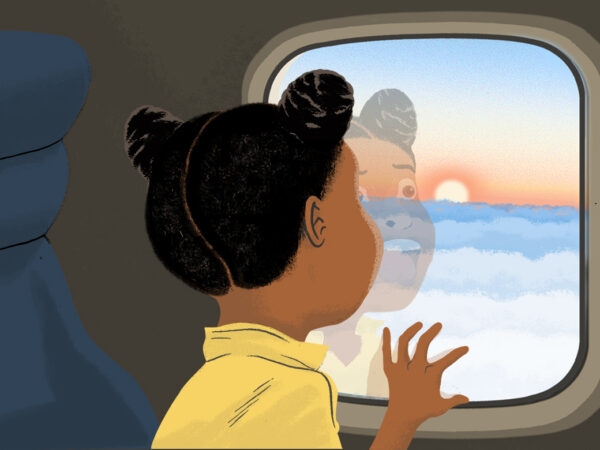


Terminal Baggage Claim
This essay is a transcontinental flight with several stops—from Harriett Quimby’s 1912 flight across the English Channel to the 1981 PATCO strike that nearly brought American aviation to its knees. In between we learn about a Tuskegee airman who became a POW and a bit about children’s books that deal with aviation.

An Adventure in Vintage Flying or the Long Way Home for a Martini
In layman’s terms, there were only six airworthy Jennys in the United States; now there are five.
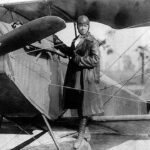
Race Empress of the Air
Bessie Coleman’s real life made her something larger than most Blacks and most women could imagine themselves to be, and her fictionalizing made her large life larger. Blackness had become something ultra-modern with Coleman, a meta-fiction, the mastery of fabrication, of image, for public consumption. She was the heroine of velocity. She ushered Black people into the age of speed.
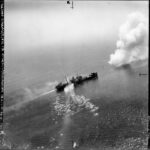
Flying Home
My father was there, the photograph says to me directly. But he was also not there. Not only not visible in the photograph—which, taken from the wing, shows no hunched shoulder or flying cap to indicate the person pressing the firing button—but not there at all. Concentrating, yes; in fear for his life, yes. Supremely there, of course, while the shipboard German gunners sprayed flak at him and he dropped his powerful twin-engine airplane into a dive. But also absent, in a reverie.

Connecting Flights
As I write this essay, I am listening to Bird’s records. I love the inventiveness, the breakneck pace, and the flights of fancy of his melodies. I admire his daring and ingenuity, just as I do the Wright brothers’ daring and ingenuity: over a century after they occurred, it is thrilling to read accounts of their first successful powered flights.

Why Buying an Airline Company Is Cool
Dave Barger ran JetBlue for seventeen years, leaving in 2015. Today, that little startup is merging with Spirit to become the fifth-biggest airline in the nation.
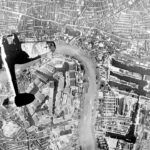
A Sky Aglow with Death Machines
This was what my relatives went through, this is what Ukrainians experienced every day: fear of the skies, of anonymous violence delivered imperiously from above, whether from planes, missiles, or drones, this overwhelming sense of powerlessness in the face of the unknown hand determined to smite you down.

Why I Fly
Tomorrow I will drive thirty miles to pull out of a pole-barn hangar with peeling sheet metal siding a seventy-year-old, tube-and-fabric realization of my deeply embedded, retro dream, because for me and for the folks I most enjoy drinking a beer with, the soul is still to be found in flight and the machines that do it.

First Solo
There is a delicate mixture of ego and humility that one looks for in an aspiring pilot. If the person sitting next to you does not think he can handle the airplane in just about any situation, if she does not look forward to increasing challenges, then you begin to wonder if the person is cut out to be sitting in the left seat of the airplane.

Tales of The Flight Attendant
Page Barrera got her first job as a flight attendant eight years ago, and she says she just might keep it until she retires.
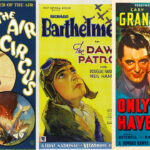
Flight and Film
Flight, with its intoxicating blend of graceful beauty and adrenalizing daredevilry, was custom-made for cinema, which exults in movement—they are called motion pictures—and delights in vicariously transporting audiences to seemingly unreachable places.

Making an Airplane a Safe Space
Duane Huelsmann opened federal screening operations at two JFK terminals and one at Raleigh-Durham, then came home to St. Louis to do the same here. As deputy security director for the TSA, he now oversees screening operations across the state of Missouri.

Managing Air Traffic before PATCO
By 1929, though, Archie League had crossed over to safety’s side and taken a job with St. Louis’s nine-year-old airport. Every day, he walked to the end of the Lambert Field runway with a wheelbarrow that held a deck chair, a beach umbrella for summer heat, a notepad, his lunch and, most important, two flags.
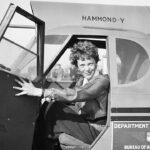
Amelia Earhart and Her Feminist Impact on America
She floated, so to speak, on the higher echelons of fame and she had fun. In fact, her second book, written after her solo transatlantic flight, was called The Fun of It.

Riding in the Jenny Biplane, an American Icon
It was all safe as houses, and twice as fun—an opportunity of a lifetime, and powerful enough an experience that I still have a hard time overlaying it on my childhood dreams of flying in a Jenny. For now, let me say that on this day a complicated little freedom machine called the Jenny—built to aid warfare, at once fragile and powerful in its utility, and as beautiful as a moth in the daylight—transported me through time and space and let me return to people I love.

How a Big-City Airport Invents the Future
Before taking charge at Lambert, Rhonda Hamm-Niebruegge held management positions with its later deserters, American Airlines and Trans World Airlines. Thus she has spent most of her career in St. Louis, riding the city’s swings between Midwestern pride and a Midwestern inferiority complex.
